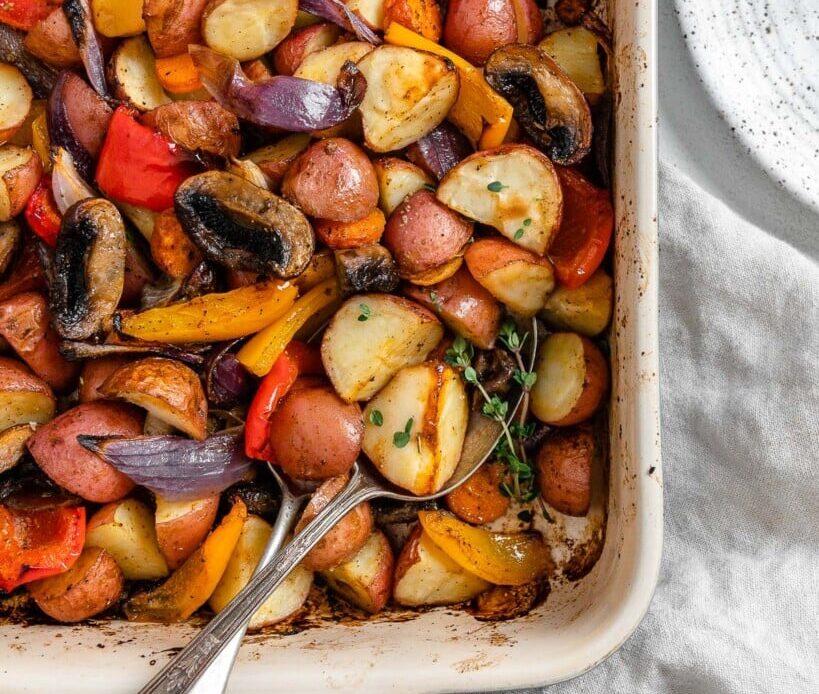
You’ve got a hankering for something hearty, don’t you? Well, you’re in the right place!
We’re about to dive into the world of thyme roasted vegetables. It’s easier than you think, and boy, does it pack a punch of flavor.
With our tips and tricks, you’ll master the art of this versatile dish in no time. So grab your apron, it’s time to get roasting!
The Uncoverable Taste of Thyme in Roasted Vegetables
You’ll find that the taste of thyme truly transforms the flavor of roasted vegetables, creating a unique and unforgettable combination. It’s that earthy, slightly lemony flavor that weaves its magic into the texture of the veggies. You can’t ignore the way it enhances the natural sweetness of carrots, or how it plays up the robustness of roasted potatoes.
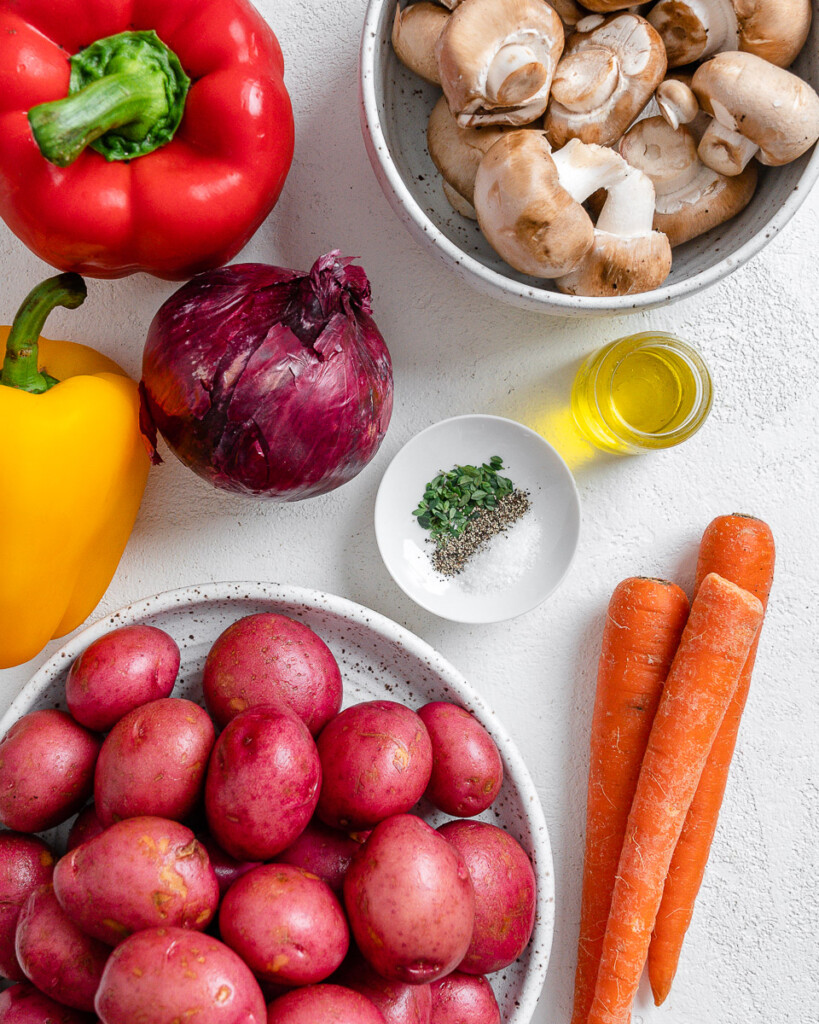
When you roast veggies with thyme, you’re not just cooking, you’re crafting a flavor experience. You’re bringing out the vegetables’ inherent flavors, and you’re adding a layer of complexity that’ll have everyone begging for seconds. Don’t be surprised if you find yourself reaching for the thyme every time you roast veggies. After all, who can resist that extra dimension of flavor? It’s simply irresistible.
Perfecting the Art of Roasting Vegetables With Thyme
Mastering this cooking method will transform your ordinary dinner sides into flavorful, aromatic dishes.
You’ll start by choosing fresh, hearty vegetables like potatoes, carrots, and Brussels sprouts. Cut them into uniform pieces to ensure even roasting.
You’ll toss these in a blend of olive oil, salt, and fresh ground pepper. Then comes the magic: sprinkle a generous amount of thyme over your veggies. Its lemony, minty flavor will permeate through them as they roast, creating a symphony of taste.
Roast them in a preheated oven until they’re golden and crispy. You’ll be amazed at how this simple herb elevates your dish.
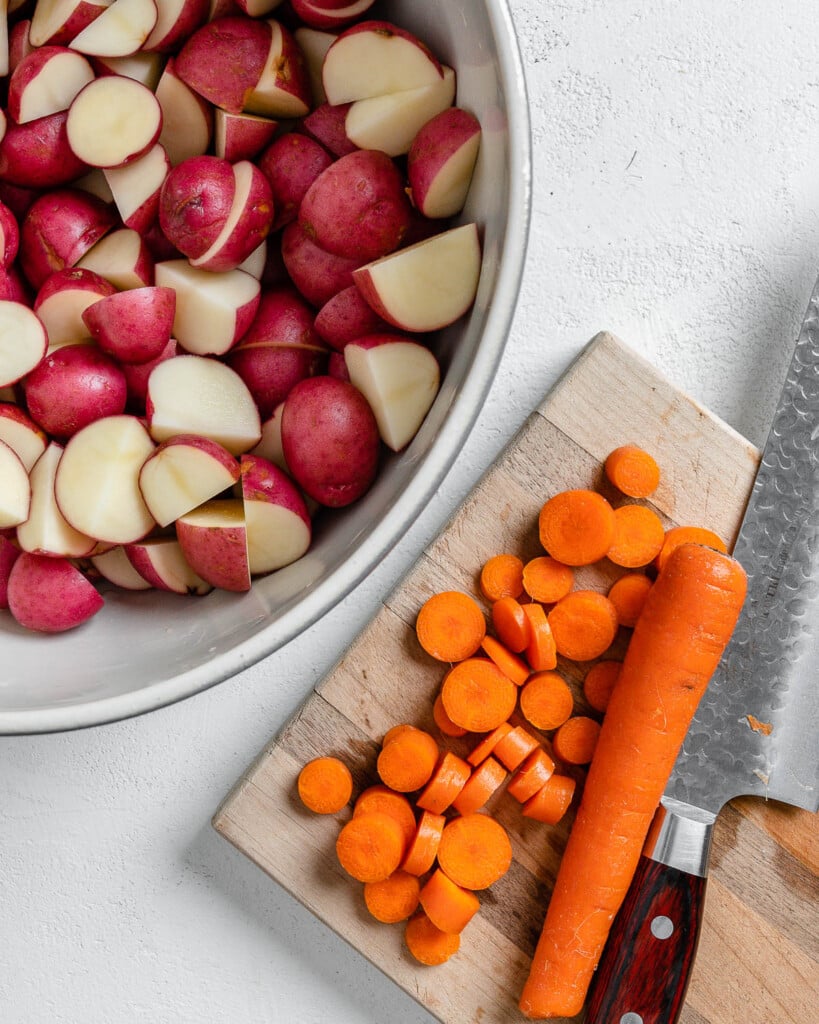
Key Ingredients for a Delicious Thyme-Roasted Vegetable Dish
In creating your savory dish, the selection of key ingredients is paramount to achieving that perfect blend of flavors. You’ll need a variety of fresh vegetables – think bell peppers, zucchinis, and carrots. The star of the show, however, is thyme. Its sweet, earthy flavor complements the natural sweetness of the veggies, taking your dish to a whole new level.
Remember, quality matters. Choose fresh, organic vegetables if possible, and use high-quality olive oil for roasting. Don’t forget the salt and pepper – they’re not just for taste, but they also enhance the flavors of the other ingredients.
Lastly, a squeeze of lemon juice before serving can brighten up the dish, cutting through the richness of the roasted veggies. With these ingredients, you’re well on your way to a delicious thyme-roasted masterpiece.
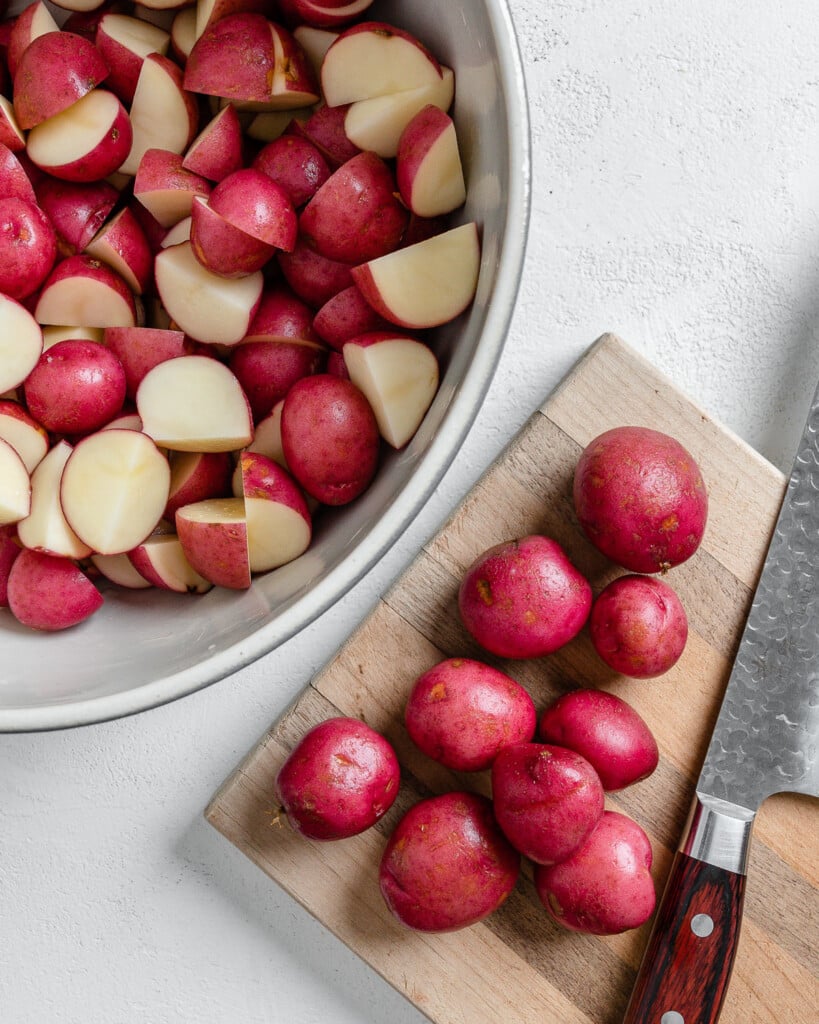
Step-by-Step Guide: How to Prepare Thyme Roasted Vegetables
Let’s dive into the step-by-step process of creating this flavorful dish, shall we?
First off, preheat your oven to 400 degrees Fahrenheit.
While it’s heating up, take your chosen veggies and chop them into bite-sized pieces. You’re aiming for uniformity here for even roasting.
Next, toss them in olive oil, ensuring they’re well coated.
Now, you’re ready for the thyme. Sprinkle it generously, along with some salt and pepper for an extra flavor kick.
Once your oven is hot, spread the veggies on a baking sheet. Don’t overcrowd them; they need space to roast properly.
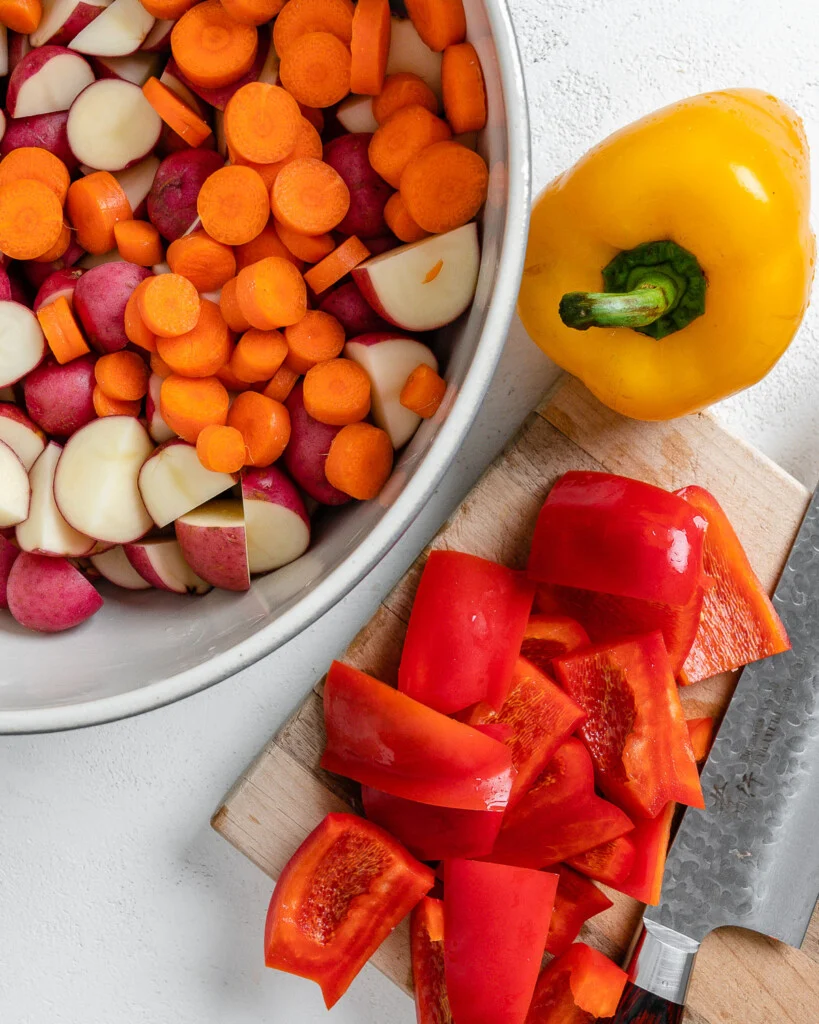
Pop them in the oven and let them roast for about 25-30 minutes.
Halfway through, give them a good stir.
Once they’re nicely browned and tender, they’re done!
Enjoy your thyme roasted vegetables.
Tips and Tricks for Mastering Thyme Roasted Vegetables
You’ll find that using fresh herbs instead of dried ones can significantly enhance the flavor profile of your dish. Fresh thyme, in particular, can make your roasted vegetables sing with flavor. Make sure you’re using the right amount – a little goes a long way. Don’t just toss the veggies in oil and thyme, marinate them for a bit to let the flavors soak in.
When roasting, remember that each vegetable has its own cooking time. Don’t just dump everything in at once. Start with the hardy ones like carrots and potatoes, and add the softer ones later. Finally, don’t overcrowd your pan. You want your vegetables to roast, not steam.
Following these tips and tricks will surely elevate your thyme roasted vegetables.
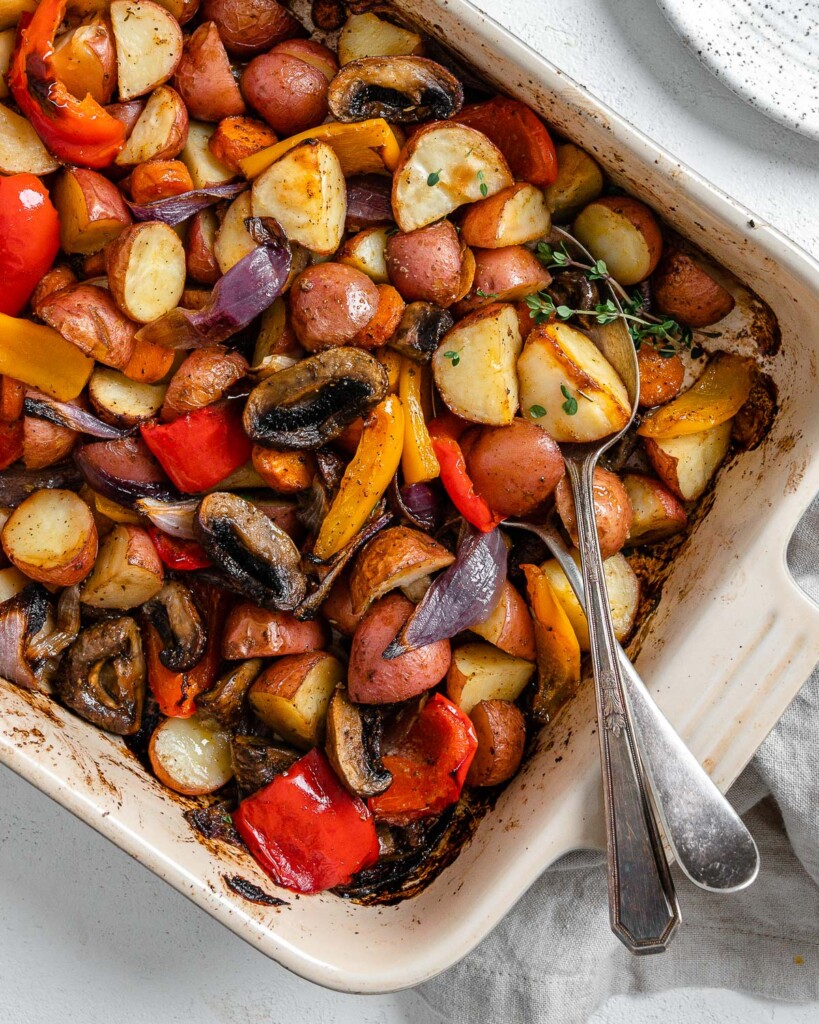
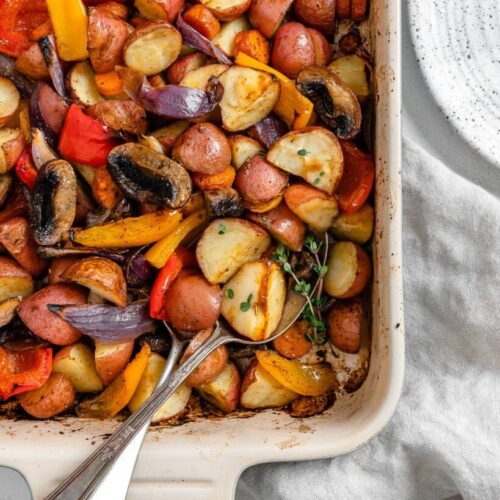
THYME ROASTED VEGETABLES
Ingredients
- 2 pounds red potatoes cubed (about 9 cups)
- 3 cups sliced sweet onions about 1-1/2 large
- 3 medium carrots sliced
- 1/2 pound medium fresh mushrooms halved
- 1 large sweet red pepper cut into 1-1/2-inch pieces
- 1 large sweet yellow pepper cut into 1-1/2-inch pieces
- 2 tablespoons butter melted
- 2 tablespoons olive oil
- 1 tablespoon minced fresh thyme or 1 teaspoon dried thyme
- 1 teaspoon salt
- 1/4 teaspoon pepper
Instructions
- Preheat oven to 400°. In a large bowl, combine vegetables. Add remaining ingredients; toss to coat.
- Transfer to a 15x10x1-in. baking pan. Roast 45-50 minutes or until tender, stirring occasionally.
HELP SECTION
What Are the Health Benefits of Thyme-Roasted Vegetables?
You’re benefiting in several ways. Thyme’s packed with vitamins C and A, boosting immunity and vision. Roasting preserves these nutrients. Plus, the vegetables themselves are fiber-rich, aiding digestion and controlling blood sugar levels.
Can I Substitute Thyme With Another Herb in the Recipe?
Sure, you can substitute thyme with another herb in your recipe. Rosemary, oregano, or marjoram could work well. They’ll give a different flavor profile, so experiment to find what suits your taste best.
How Can I Store and Reheat Leftover Thyme-Roasted Vegetables?
You can store the leftovers in an airtight container in the fridge for up to 5 days. To reheat, just pop them in the oven at 350°F until they’re hot. They’ll taste just as delicious!
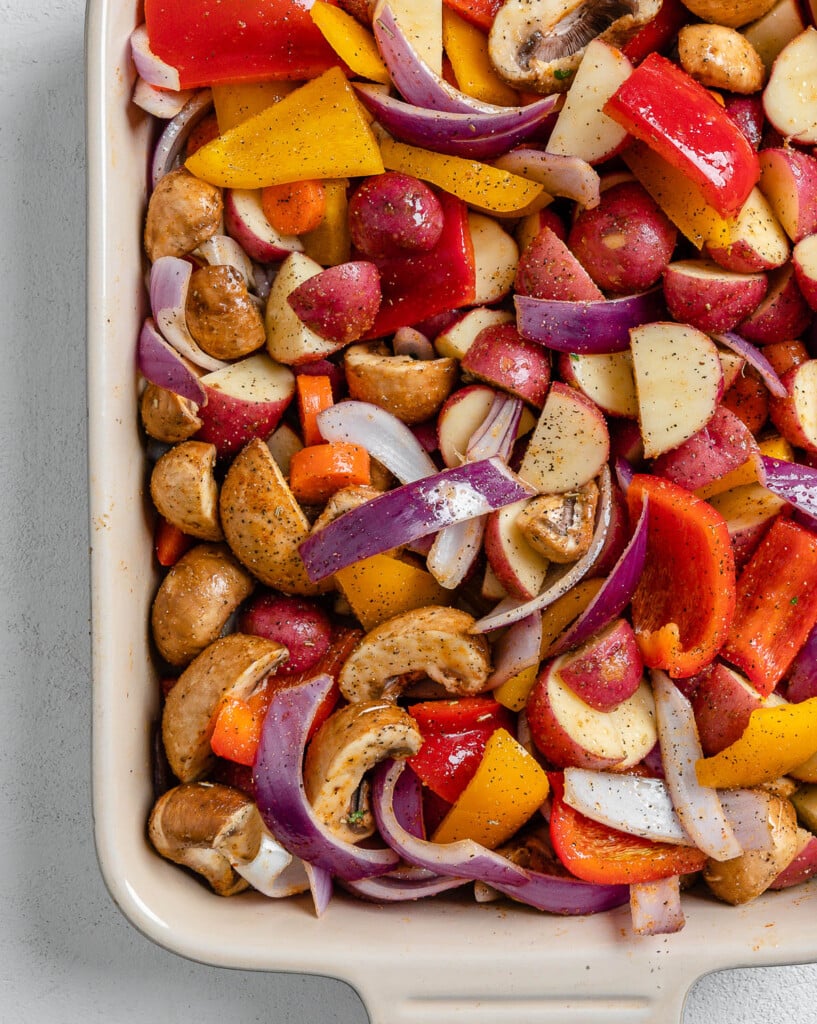
Can Thyme-Roasted Vegetables Be Incorporated Into Other Dishes?
Absolutely, you can incorporate leftovers into other dishes. They’re great in omelettes, wraps, or as a pizza topping. You can even puree them into a soup. It’s a fantastic way to minimize waste and maximize flavor.
Are There Any Specific Vegetable Combinations That Should Be Avoided When Making Thyme-Roasted Vegetables?
You’re free to experiment with any veggie combinations; however, avoid those with different cooking times. It’s not about the mix; it’s ensuring they all roast evenly. So, don’t mix quick-cooking and slow-roasting veggies.
Conclusion
So, you’ve mastered thyme roasted vegetables. It’s easier than you thought, right? With the right ingredients and method, you’ve unlocked a world of flavor.
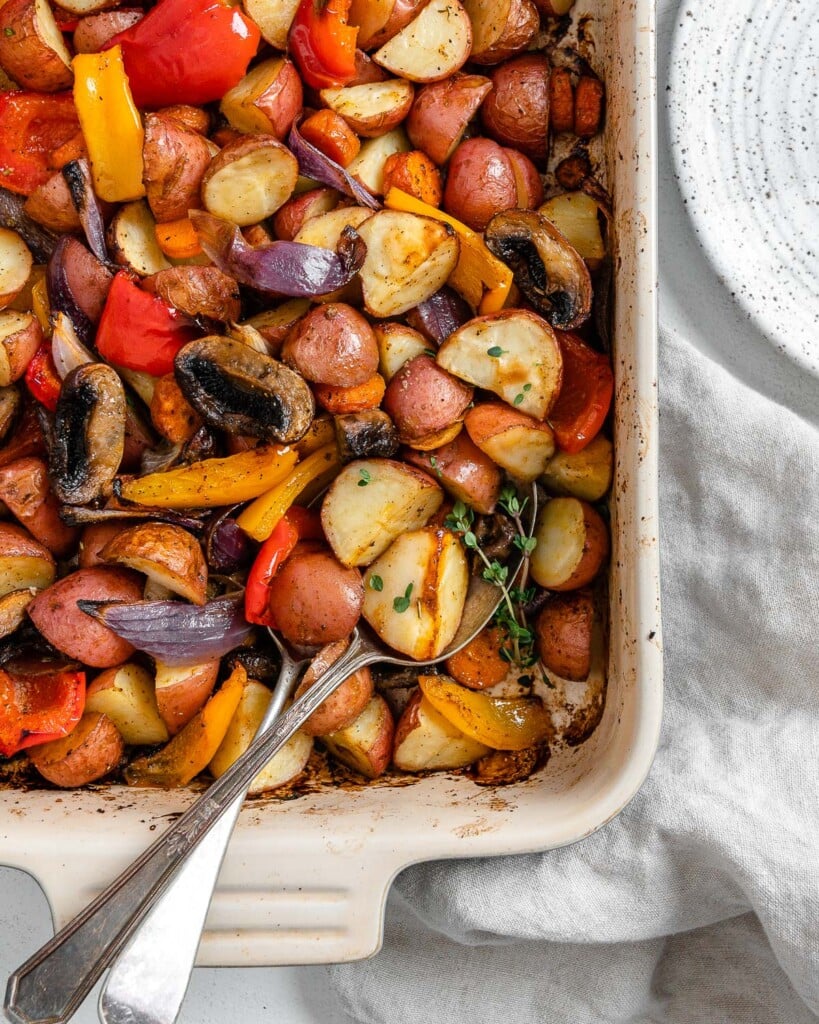
Remember, practice makes perfect. Keep experimenting with different veggies and spice levels. You’ll soon find your own signature version of this dish.
So go ahead, serve up your thyme roasted vegetables and soak up the compliments. You’ve earned them.
Enjoy your culinary journey – it’s only just begun.




